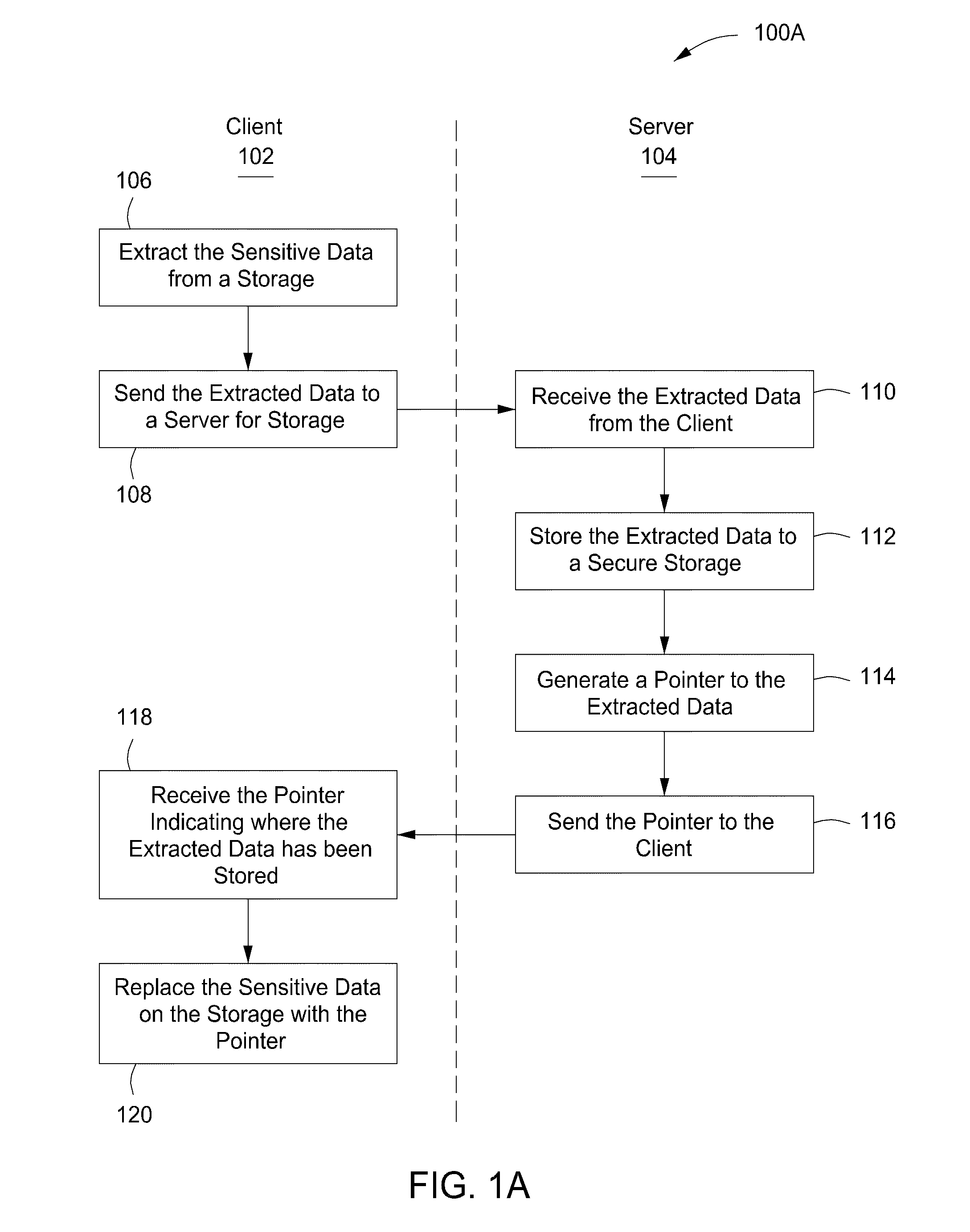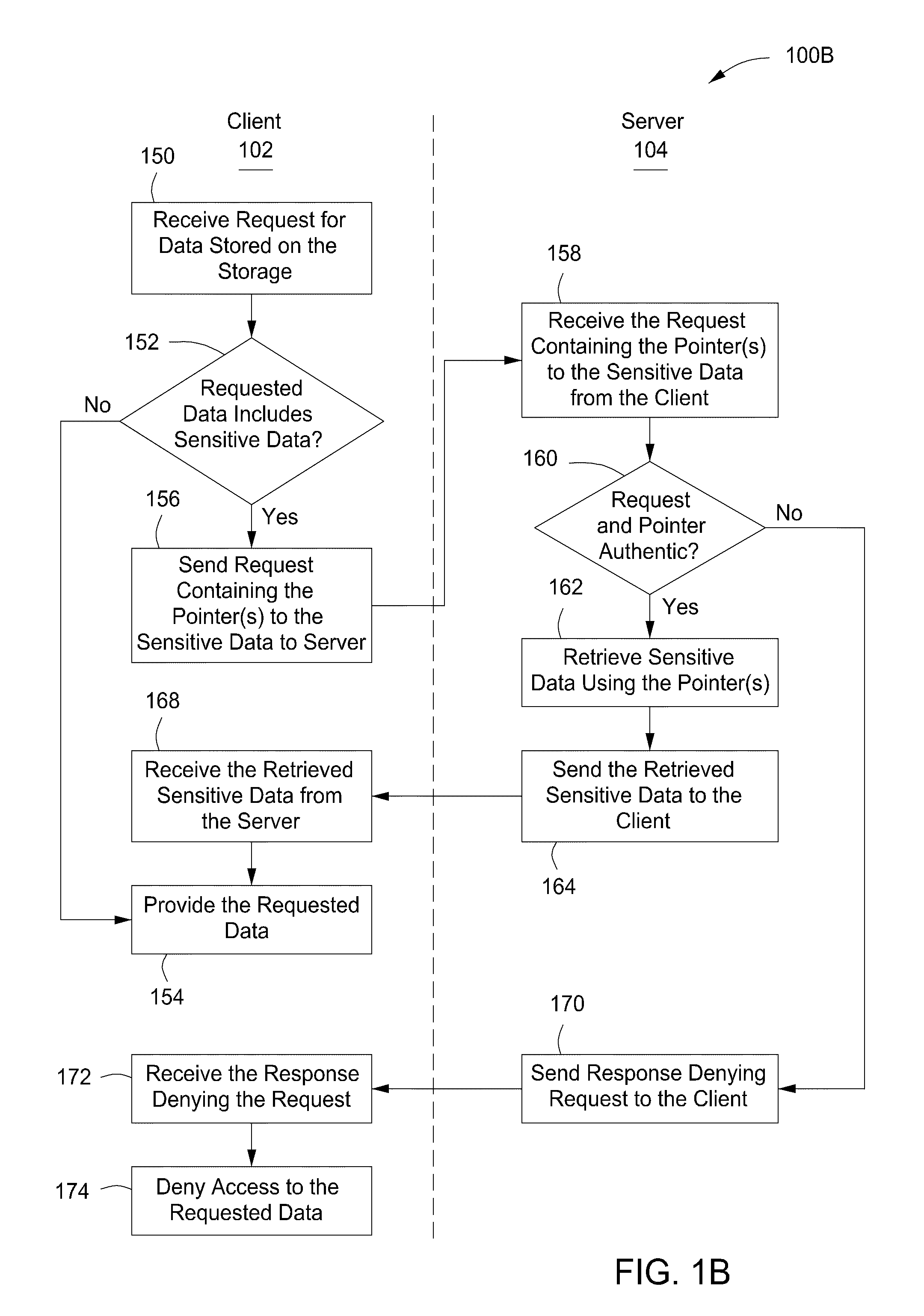McAfee's market valuation immediately dropped $600 million.Outsourcing to countries like India is tempting as a way to reduce costs, but data stolen overseas is being used to blackmail U.S. companies.Compliance costs for Sarbanes-Oxley are so high that they are measured as a percent of total revenue.
Software, music, and DVD pirating in countries like China is making a mockery of copyright laws.
All of these examples have one thing in common—the need to protect data has become extremely urgent.
Current technologies like
encryption, SSL, and VPNs have been shown to be only partially adequate.
There is still, however, a gaping hole in this strategy—how can sensitive data be protected when these tools fail?
Or when data is shared with a trading partner and that trading partner's servers are compromised?
Just twenty years ago,
disk storage space was so expensive that many companies saved money by not storing the “19” as a part of the year (and the resulting Y2K problem cost companies billions of dollars).
The falling cost of collecting, storing, and transmitting data is the reason why data and
digital content problems are “just going to continue”, perhaps at an accelerated rate.
This is further complicated by an increasing dependence on portable devices and types of media that are easier to lose or have stolen.
Portable devices also increase risks because the application may provide direct access to sensitive data that is stored on central servers.
Current systems fail to address all of the following
data security problems:The sensitive data or
digital content in storage may contain personal, corporate, or copyright content.
In the future,
quantum computing may make such attacks trivial.
Encryption is also problematic because it is difficult to use in many applications.
If a person's or entity's personal or sensitive data is stolen, it can be used any number of times.It is very difficult to determine if
digital content has been accessed or copied.It is very difficult to determine where a
digital copy came from or where it has been sent.It is very difficult to determine where or then digital content is being used.It is very difficult to get additional information about what else a perpetrator has copied or is doing.There is no way to destroy the copied digital content.There is no way to destroy the device the digital content is stored on.It is very difficult to collect
payment of copyright content that has been copied.There is no provision for dealing with unknown future threats.Once sensitive data is accessed by an application, the user can typically “print” the data to another device (e.g., printer, etc.) or application (e.g., WORD® to
ADOBE® PDF, etc.), or “write” the data to another media (e.g., CD, DVD,
flash drive, etc.) without further restrictions or checks.Central
system administrators do not have information about and control over all potentially sensitive information in all servers, PCs and devices in the enterprise.
The high number of places that sensitive information occurs in an enterprise has created a huge and growing problem for virtually all IT departments, including:
Data security: multiple copies of the same data greatly increase security costs and the chance that some of it will be lost or stolen.
Data redundancy: multiple copies of the same data create a problem when not all copies are the same.
Unlike the Y2K problem that was a one-time event, regulatory compliance is an ongoing issue that will never be finalized.Fear of innovation: lack of security prevents companies from trying new things to remain competitive.
But rolling back technology creates other significant problems:The U.S. has lost already its competitiveness in many industries, and rolling back technology greatly limits the ways that businesses can remain competitive.Dumb terminals have significant drawbacks due to communication latency and slower response times.Simplified terminals provide less freedom and flexibility to individual users, while placing greater demands on computer technicians for support and access to additional
software.
Enterprise security managers are particularly concerned about the loss of
laptop computers.
According to the FBI, a
laptop is stolen every 53 seconds, and 97 percent of them are never recovered.
This type of security is problematic for many reasons, including:The data in a
laptop is worth far more than the laptop itself.A thief can copy files from a stolen device in just minutes, so seconds count after a theft has occurred.The disk of a stolen laptop can be removed or used as a slave of another device, this bypassing LOJACK® protection.Data can be copied from a stolen laptop onto another device.Stolen laptops can be booted in “safe mode” to bypass LOJACK® security.Stolen laptops can be run offline so they cannot call the
central database to see if it has been reported stolen.There can be no assurance that a recovered laptop's data was not copied.The laptop is not secure between the theft and the reporting of the theft.LoJack® does not protect other devices, such as
cell phones, PDAs, and RFID tags.LoJack® offers a service that deletes the contents of a stolen laptop, but a $200 fee is charged for this because of the manual work required at the
central database to instruct the laptop to take such action.
 Login to View More
Login to View More  Login to View More
Login to View More 


